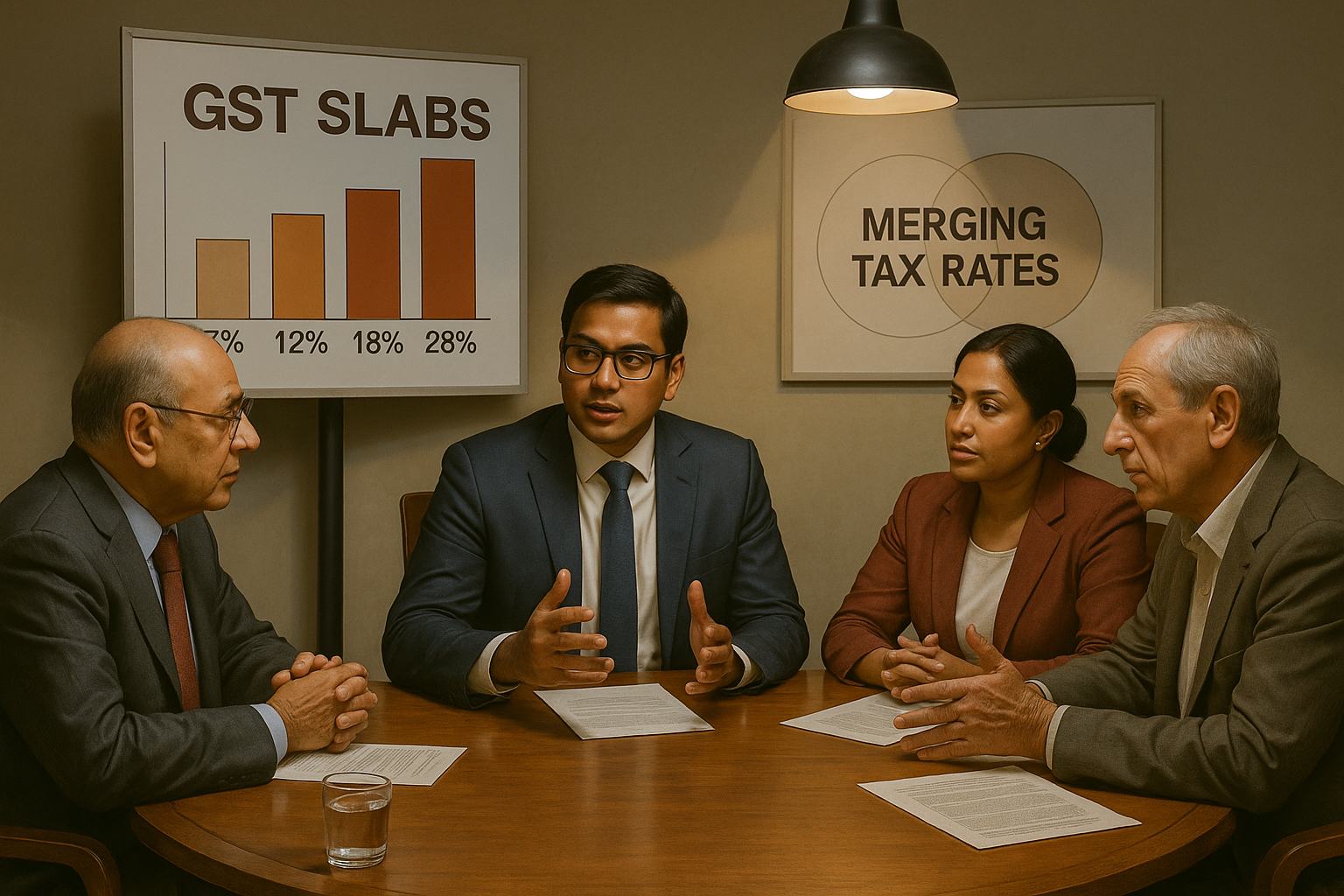As the Goods and Services Tax (GST) Council gears up for its much-anticipated meeting in late July, hopes are rising across industries for a long-awaited rationalisation of GST rates. Several leading brokerages and tax experts have expressed optimism that the Council may finally initiate structural changes to streamline tax slabs, a move that could have significant implications for consumption, compliance, and revenue collection.
Background
India’s current GST framework operates across four key tax slabs—5%, 12%, 18%, and 28%—apart from special cesses on select goods and services. This multiplicity has long been criticized for causing classification disputes, tax inefficiencies, and compliance burdens, especially for MSMEs.
The original vision of the GST regime included a three-rate structure with fewer exemptions and cesses. However, the current structure has evolved into a complex grid, prompting calls from economists and businesses for simplification.
The Council had earlier deferred rationalisation due to inflationary concerns and post-COVID fiscal pressures. With improved revenue buoyancy and fiscal stability, momentum for change has returned.
Market and Brokerage Expectations
ICICI Securities in a recent report noted:
“There is a strong possibility of rationalising the 12% and 18% slabs into a single rate, possibly around 15–16%, while exempt items and merit goods may remain protected at 5%.”
Kotak Institutional Equities highlighted that any rationalisation is likely to be revenue-neutral and spread over phases to avoid a price shock. Their analysis suggests that goods with current 18% GST—like appliances, auto parts, and packaged foods—could see moderate rate cuts.
Meanwhile, Motilal Oswal Financial Services anticipates revisions in:
Online gaming, casino, and horse racing categories (clarity on valuation and applicability of 28% GST),
FMCG and packaged foods where slab shifts could impact MRP structures,
Tax rate anomalies in textiles, footwear, and small electronics.
Expert Views
Rajiv Poddar, Indirect Tax Partner at BDO India, states:
“Rationalisation could significantly boost voluntary compliance, especially among MSMEs who struggle with inverted duty structures. But clarity on slabs and input tax credit must go hand-in-hand.”
Megha Jain, Economist at a private think tank, notes:
“GST rate simplification would enhance transparency, reduce litigation, and improve tax buoyancy—a win-win for both the Centre and states if calibrated wisely.”
Likely Impact Areas
Manufacturing and consumer goods companies could see lower tax costs, improving affordability and margins.
Services sector firms in the 18% bracket, such as consulting and digital services, may benefit if the higher slab is merged.
Gaming and e-commerce platforms await critical updates that could reshape their tax and pricing models.
However, any reclassification must avoid inflationary spillovers, especially in sensitive sectors like food, healthcare, and education.
Looking Ahead
The upcoming Council meet is seen as a potential inflection point for India’s GST regime. While complete overhaul may take time, even a partial rationalisation would signal intent and pave the way for a more stable, predictable, and business-friendly tax framework.
Clarity on the timeline, implementation roadmap, and impact analysis will be key in determining how businesses re-align their operations post-meeting.












